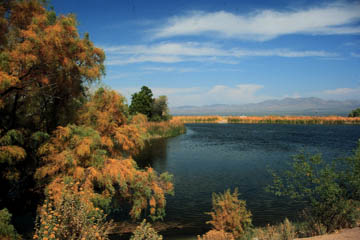
[Source: Diane Saunders, Eastern Arizona Courier] — Roper Lake State Park south of Safford dodged an economic bullet Feb. 4 when the Arizona State Parks Board decided not to close eight state parks in an effort to help the state budget crisis. Instead, the State Parks Board will examine other ways to overcome a budget deficit at its Feb. 20 meeting, according to the department’s Web site.
Roper Lake and seven other Arizona state parks were targeted for closure after the Arizona Legislature decided to divert money from the agency to help balance the state’s budget. According to the Arizona State Parks Department, Roper is one of the costliest parks in Arizona to operate. Nearly 86,000 people visit Roper each year, however, the cost to the state is $2.51 per visitor. In comparison, Arizona’s costliest park to operate is McFarland State Historic Park in Pinal County. That park draws 4,945 visitors a year and it costs the state $37.94 per visitor to operate, according to the Arizona State Parks Department.
Only two of Arizona’s state parks make money — Catalina in Pima County and Kartchner Caverns in Cochise County. Catalina has 168,874 visitors a year and makes a profit of 90 cents per visitor. Kartchner draws 160,013 visitors a year and makes $2.51 per visitor. [Note: To read the full article, click here.]

